Indonesia’s sleepy Lake Toba is awakening with tourism
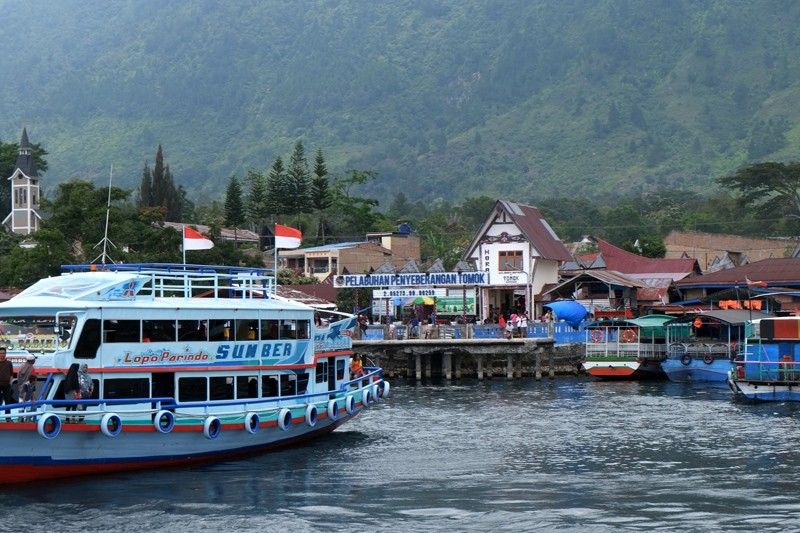
TOBA REGENCY, Indonesia — Roads, albeit small, are well paved in Balige, the capital of Toba Regency in North Sumatra, Indonesia. Passing by, one can see from either side of the road rolling hills or rice paddies. These landscapes, which are dotted by pine trees, form a dreamy scenery.
Every once in a while, small wooden or cemented houses in architecture unique to the place appear alongside the road or among the farms. Soon, the town center presents more establishments, both residential and commercial.
Thriving in this provincial—almost sleepy—surrounding of houses, establishments, farms and hills are the Batak people of Lake Toba.
Hailing from northern Sumatra, the Bataks are considered as one of the largest indigenous groups of Indonesia. They are mountain-dwelling but in Toba, the Batak are also people of the lake.
For centuries, they have relied on the bounty and lived with the beauty of Lake Toba, which fills the caldera of a super volcano. At 1,145 square kilometer, and 450 meters deep, it is the largest volcanic lake in Southeast Asia, as well as one of the deepest in the world.
Interestingly, the super volcano still breathes and its lake is fast awakening not because of volcanic activity but because of tourism.
Lake Toba, together with Samosir Island in the middle, is chosen as one of the “10 New Balis” the Indonesian government is highlighting and promoting to international tourist markets including the Philippines.
In a recent media familiarization trip, Philstar.com discovers a promising destination true to its people and its lake.
Loud and proud to be Batak
Always at the front and center of tourism are the people, which is the case for the Batak Toba who are simply hard to miss. They are inherently a loud and proud race.
They appear to be arguing but they are just conversing, explains Gama Sutrisno from the Social and Cultural Section of the Indonesian Embassy in the Philippines. A Batak himself, Sutrisno accompanied the Philippine media representatives who joined the familiarization trip.
This characteristic is just the exterior. Culturally, they still follow old customs. For example, those with the same surname are considered siblings even if they aren’t related by blood anymore. Hence, they aren’t allowed to intermarry within clans.
Farming is also innate to the Batak, says Johannes Sibarani, a registered tour guide for Toba and Samosir. At a young age, they are taught to farm not just for livelihood but also to learn the values of hard work and humility.
It is no wonder why Sibarani is working hard for the tourism of Lake Toba. Gading Siallagan is another one.

Siallagan heads a tour guide association in Samosir Island. He is also the last direct descendant of his village’s royal family. In 2010, he accepted leadership of Huta Siallagan after the passing of his brother, the previous chieftain.
Formerly an aerospace flight control engineer, this well-traveled Batak has finally settled in his “huta,” which literally translates to village, along with his wife and seven children.
Despite retiring early from his career, Siallagan finds joy in being a tour guide. With a penchant for jokes, he is able to make tourists laugh during his tours.
“I am training our tour guides here, not just how to share our Batak culture but also how to entertain. I love entertaining our visitors,” Siallagan says.
Symbols and showcases of culture
Huta Siallagan is one of the last traditional villages that remain in Samosir Island. Seven families, including the Siallagans, still reside inside the small village enclosed inside walls.
Each family is represented by a traditional Batak house. An eighth house is reserved as a museum.
Although reproductions, these houses are built in Batak architecture and are adorned with symbolic wooden carvings. A lizard on the entrance beam portrays the wanderlust of Bataks. A juxtaposition is seen in the adjacent cylindrical carvings. Symbolizing breasts, this means that the Batak will always return to their mothers and their homeland.
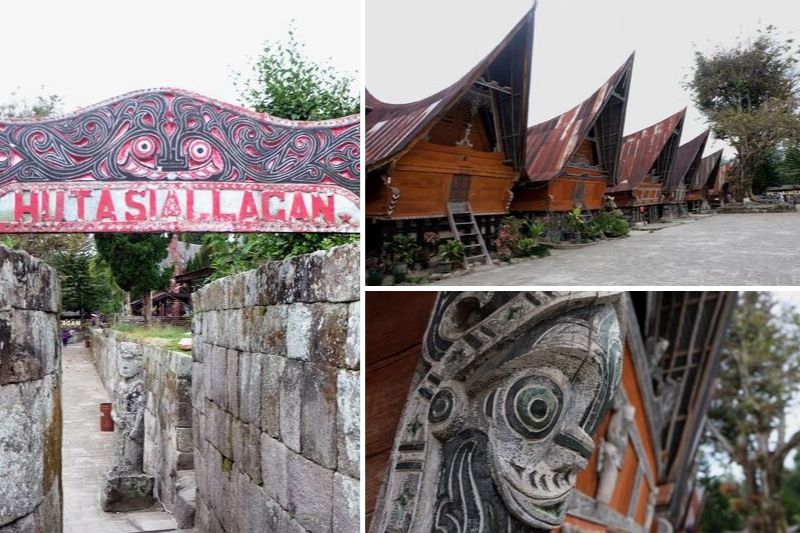
A house is divided into three levels, the lower level, an enclosure for animals, the middle level, the main dwelling space, and the upper level, a storage for harvests, explains chieftain Siallagan.
Lined up in a singular row, the houses face the mountain where gods are believed to be residing (interestingly, majority of Batak has converted to Christianity during the Dutch colonization of Indonesia).
In the front yard is a hundred-year-old tree where stone figures mimic a Batak justice court led by the king and his council of elders. recalls the justice system of olden days where crimes are brutally punished.
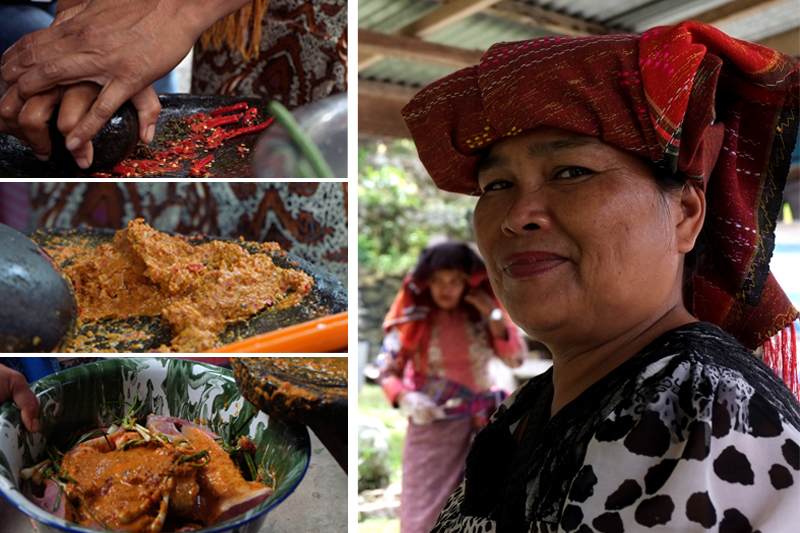
The Inang-Inangs are dressed in colorful, beaded and handwoven textile called the "ulos" worn as skirt and as headdress. Bubbly and lively, they are more than happy to cook for tourists.
A softer side of Batak, however, is revealed by the village's group of Inang-Inang, or mature ladies. They are who we call the Titas.
The Inang-Inangs are dressed in colorful, beaded and handwoven textile called the "ulos" worn as skirt and as headdress.
Bubbly and lively, about 10 of these Huta Siallagan women are more than happy to cook for tourists, even showing the food preparation passed on by the Inang-Inangs before them.
They present two dishes featuring fresh catch from Lake Toba, a golden carp. Naniarsik is a fish stew cooked over coal and seasoned with a handmade paste of chili, candlenut, onion, salt, andaliman (pepper endemic in Toba) and galangal. Naniura, on the other hand, is preserved and flavored fish using the same fiery chili paste.
"Everyone is welcome here at Huta Siallagan," says one Inang-Inang to Philstar.com through Sibarani, the tour guide. Her fellow Inang-Inangs agree with big smiles.
Their motherly warmth and genuine joy are absorbed by the food they later on serve.
From puppet dances to carnival parades
The showcase of the Batak’s heritage inside Huta Siallagan ends with the Sigale-gale dance featuring a life-size wooden puppet in the same name.
According to folklore, Sigale-gale can dance on its own even without music or puppeteer. It is also seen as a symbol for the afterlife.
But at Huta Siallagan, everyone can dance together in celebration of life and blessings. Sigale-gale continues to attract tourists to Samosir Island because of its mystery.
Just like the Sigale-gale, Toba and Samosir have also sprung to life with a celebration of Batak culture, the Karnaval Pesona Danau Toba from September 13 to 15. The festival is themed around the ulos, the Batak’s handwoven textile that serves as an heirloom piece for special occasions.
The Batak students in primary and secondary school lead Day 2 as they paraded in different interpretations of the ulos. Their costumes are all colorful but unique to their hometowns and tribes.
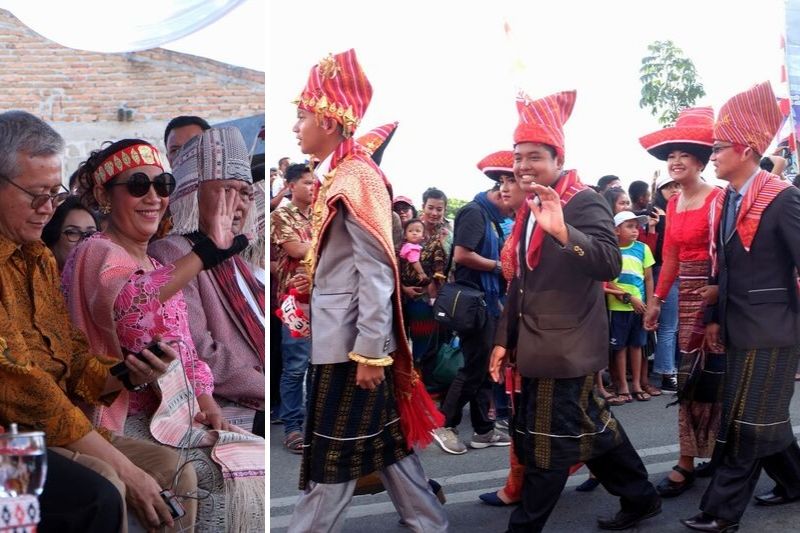
Aside from the Batak Toba, tribes Pak Pak, Karo, Angkola, Mandailing and Simalungun all gather for the three-day festival. Marine and Fisheries Minister Susi Pudjiastuti is this year’s guest of honor.
Now on its fourth year, the carnival-themed festival is formed to remind the Batak youth of their priceless and irreplaceable identity and traditions. It is on their hands to preserve their culture and pass it on to the next generation.
Lake Toba destinations
Be a witness to the Lake Toba’s culture and people. On your visit, do not miss these destinations and experiences:

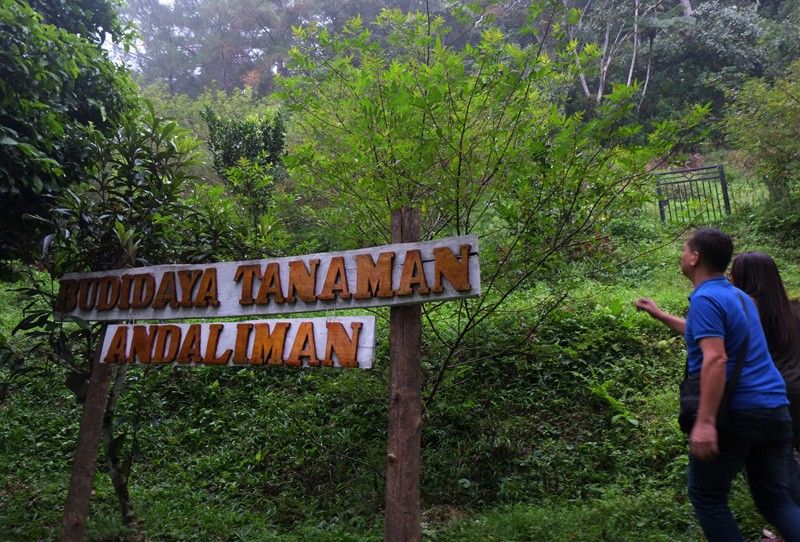
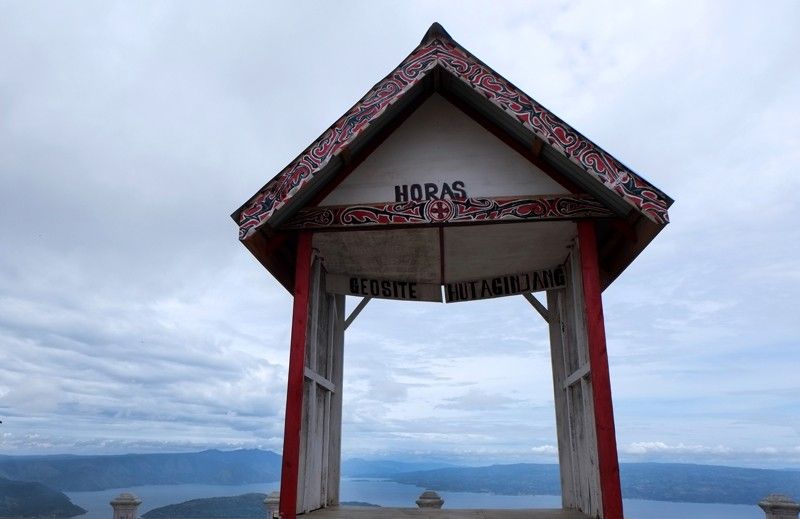
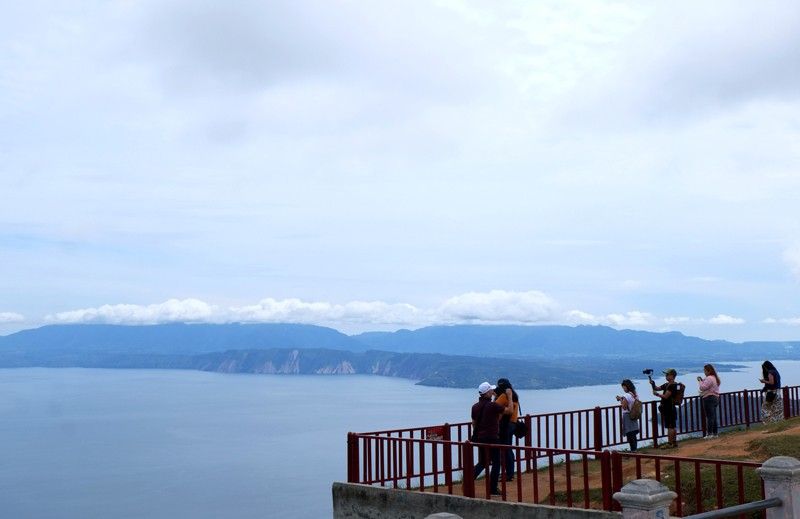
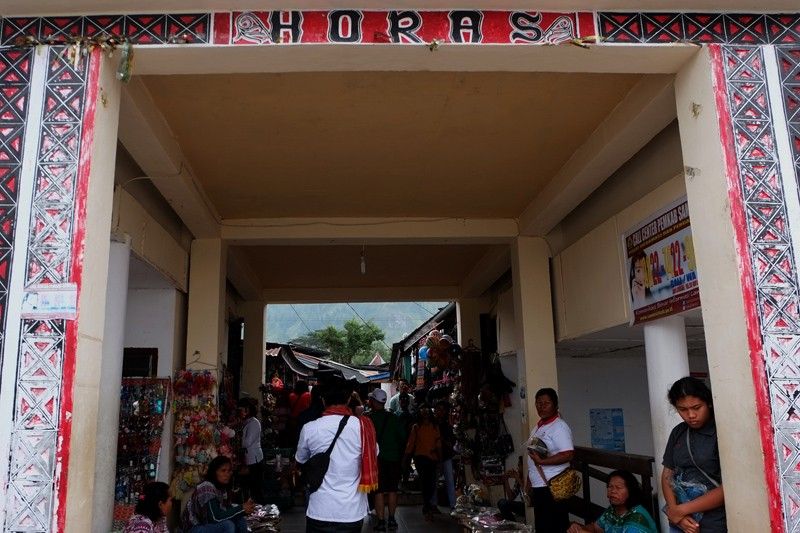

- Toba Caldera Geopark: Know more about the history of Lake Toba here. Activities include hiking, camping and visiting the Andaliman Plantation. There is also the Black Wood Coffee House.
- The Batak Museum: Visit the TB Silalahi Center to get a glimpse of the Batak culture in the museum established by -and is named after- the prominent Batak personality: Tiopan Bernhard Silalahi.
- Huta Ginjang Geopark: A viewing destination atop a hill that shows just how massive and majestic Lake Toba is.
- Tomok Village: An old village in Samosir Island that is the best for shopping. Batak clothing including the ulos, as well as accessories and bags, plus food and wood carvings are all available here.
Balige is six hours away from Medan, the capital of North Sumatra province. It is accessible via direct domestic flights from Jakarta.
To know more about Wonderful Indonesia, visit https://www.indonesia.travel/ph/en/home.




















